| Click on one of the thumbnails below to view the full picture. |
 |
Technical data and/or diagram of Deutschland class pocket battleships. |
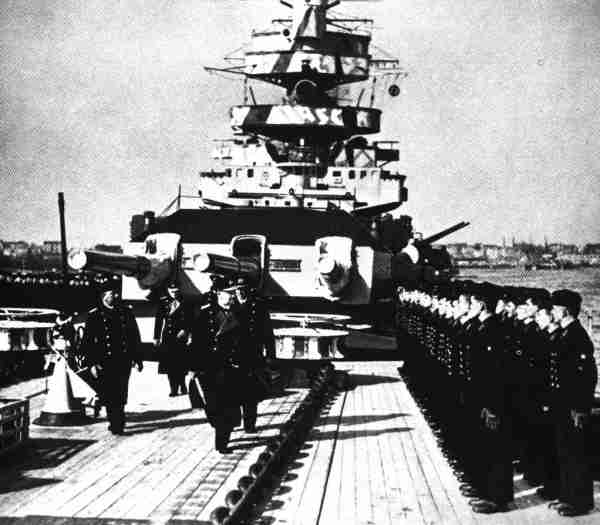 |
On 1 April 1941, after the pocket battleship Admiral Scheer
had returned safely home from a long raiding operation in the South
Atlantic, the crew was personally welcomed by C-in-C, Admiral
Raeder. |
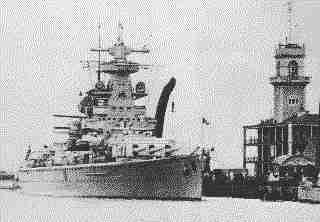 |
Admiral Scheer in port. |
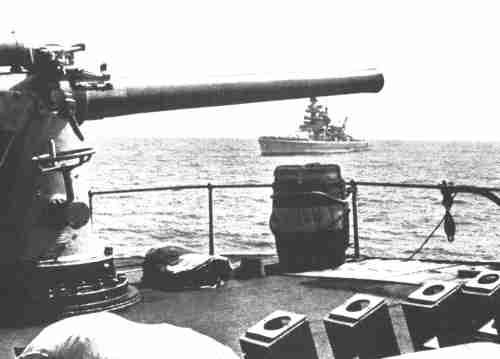 |
The gun on the deck of this English merchant ship offered only
symbolic protection against the sudden attacks of German raiders in
the South Atlantic. Admiral Scheer took on the work of her
sister ship Admiral Graf Spee a year after the latter's
spectacular end. |
 |
Admiral Scheer took no part in operations in the first
year of the war owing to the long time she spent in dock. The
picture shows her after she had been remodelled as a heavy cruiser.
She was to be the msot successful of the German pocket
battleships. |
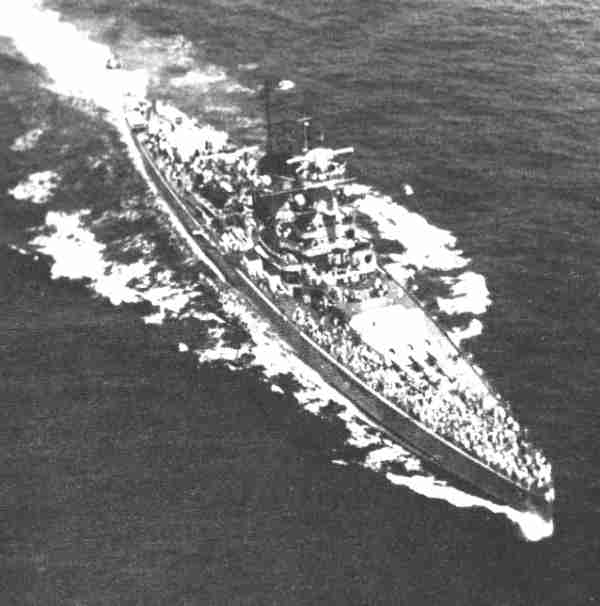 |
Admiral Scheer in the Bay of Biscay, photographed from
the airship Graf Zeppelin. The crew has crowded forward to
wave to the airship. At high speed, as in the picture, the ship had
a range of 9,100 miles; at lower speeds her range was wider. Because
of their wide radii of action these first diesel-powered big ships
could steam over the oceans without relying heavily on land bases. |
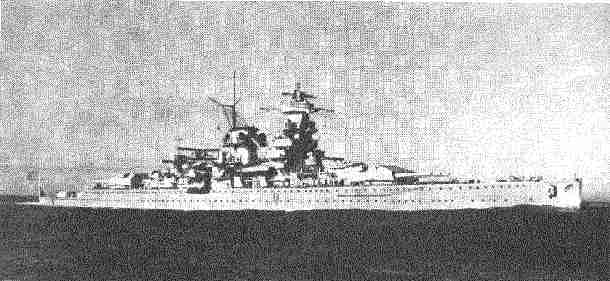 |
Admiral Scheer in March 1939. She was modified during
the first winter of the war, receiving a slender fighting top in
place of its massive control tower. |
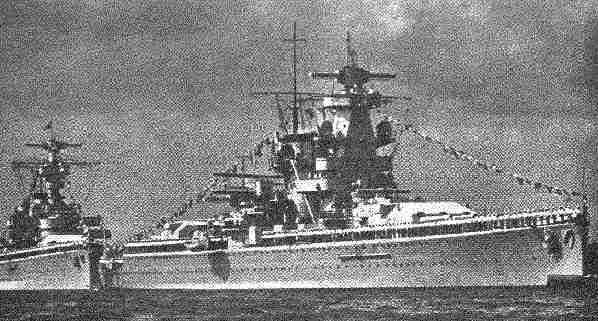 |
Admiral Scheer dressed overall and her crew lining the
ship's side. |
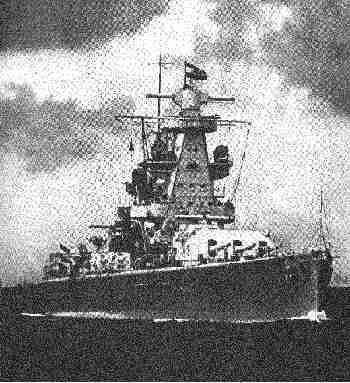 |
Admiral Scheer, commissioned in November 1934, was the
most successful ship of its class in the war. |
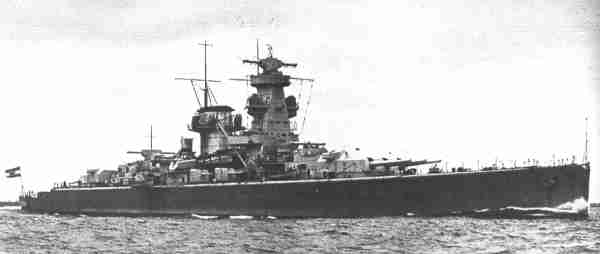 |
Seen here shortly after completion, Admiral Scheer
operated as far afield as the Indian Ocean during her epic sortie in
1940-41. |









